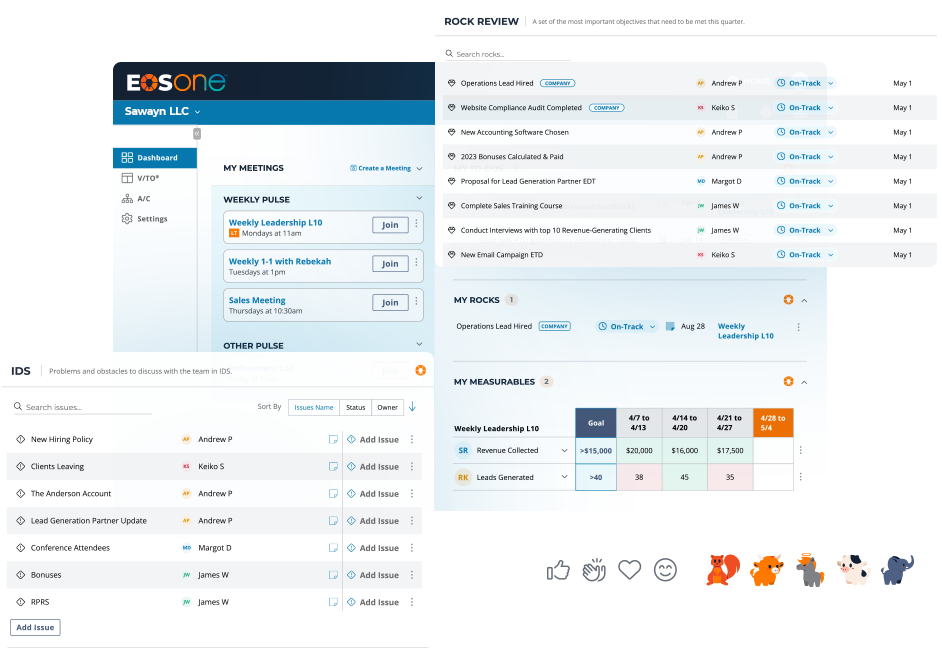Years ago, in my initial training sessions as a Professional EOS Implementer, Mike Paton (co-author of Get a Grip) was teaching us what it looked like when an organization is 100% strong in the Data Component. “Once a Scorecard is in place for every team, we implement a tool we call Measureables so that everyone has a number. That number defines success for them and the roles of their seat”. He paused for effect and added, “You can be sure that zero out of zero people want to be measured”.
After hundreds of client sessions, I can safely say that ambiguity destroys accountability. Most people will naturally avoid personal accountability. That just makes them normal, and its why the “zero out of zero” adage rings true. Cancer sets in when high performers find teammates avoid accountability because of ambiguous standards or lack of clarity in how their Roles were defined. Accountable people thrive when there is absolute clarity for both. That’s why Measureables are so important. There’s nothing ambiguous about a number.
Implementing Measureables is what often separates good companies from great ones. How do the great ones overcome “zero out of zero”? The key is in how Measureables get presented (context), written (creation), and used (application).
- Context: Measureables are for the employees as much as they’re for managers. Having clear, regular data allows people to know where they stand, compete with themselves to improve, and gauge their progress as part of the team. Present them this way because Measureables are something we do FOR them rather than TO them.
- Creation: Measureables are leading indicators of how both employees and their managers define success. When employees work closely with managers to define their own Measureables, they have skin in the game. They can’t say the Measureables aren’t fair. Start by having each employee affirm that they understand and embrace what they’re accountable for in the Accountability Chart. Once they’ve confirmed their 5 major roles, help them boil 1-3 of them down to a weekly number – a goal for success in that role.
- Application: Measureables are useless unless they’re highly correlated with the job and highly visible to everyone. Departmental Scorecards can be a good place to look for Measureables that can be cascaded to individual contributors on a team. Most importantly, they must be reviewed weekly in department L10 Meetings and in Quarterly Conversations with managers to insure they stay on track.
In the end, everyone on a high-performance team should know if they’ve had a “winning week”. Measureables helps give your team weekly validation that what they do matters. Give them a deliverable, a measureable, a metric, a definition of their own success. As Gino Wickman said in our training, “Hitting a number is the essence of accountability”.
Don’t let ambiguity destroy accountability in your organization and don’t settle for “zero out of zero”. Find the right numbers for your team so they can get the satisfaction of understanding and embracing how they’re measured. If you need help implementing Measureables for your team, reach out to www.EOSWorldwide.com


